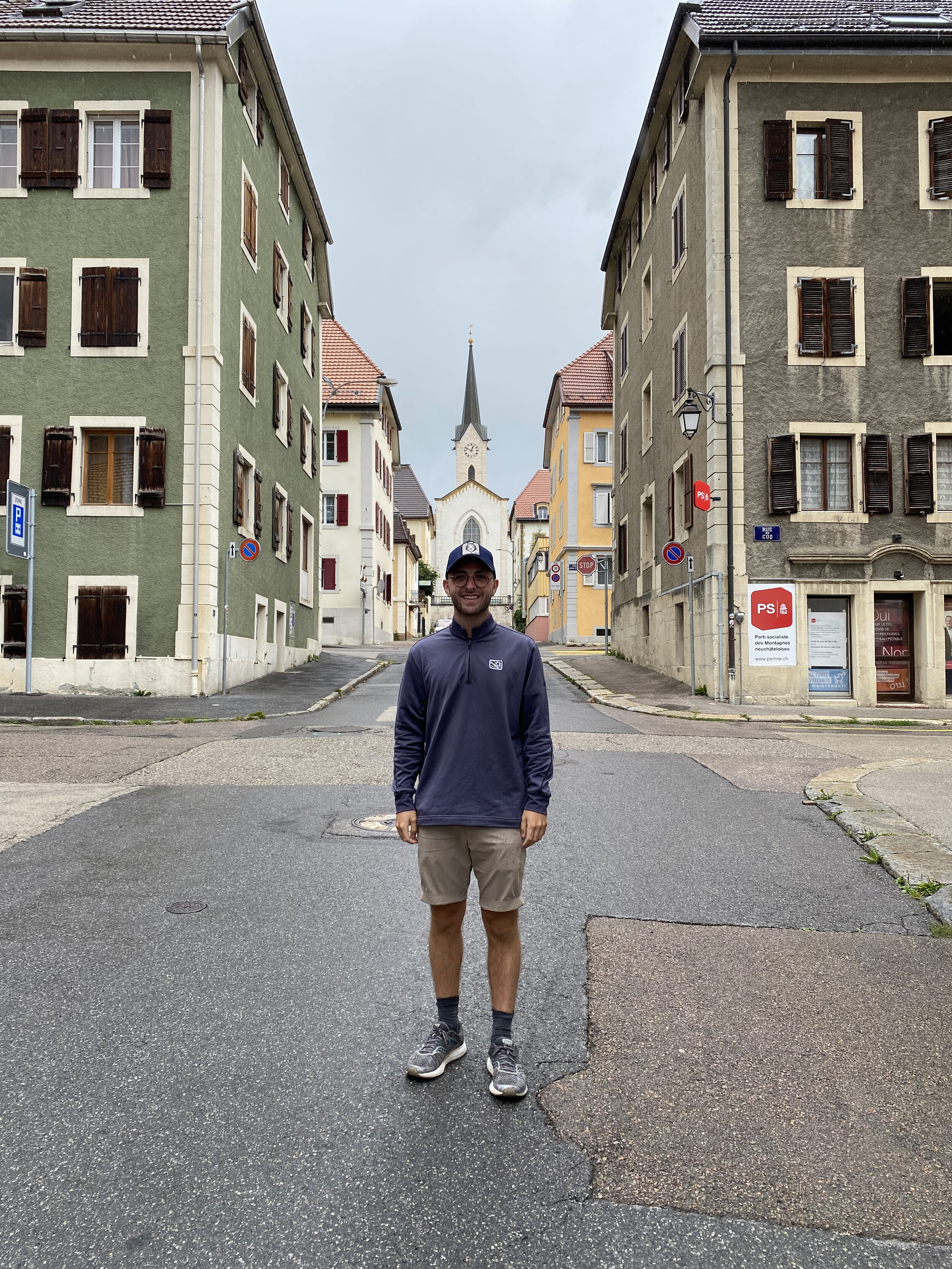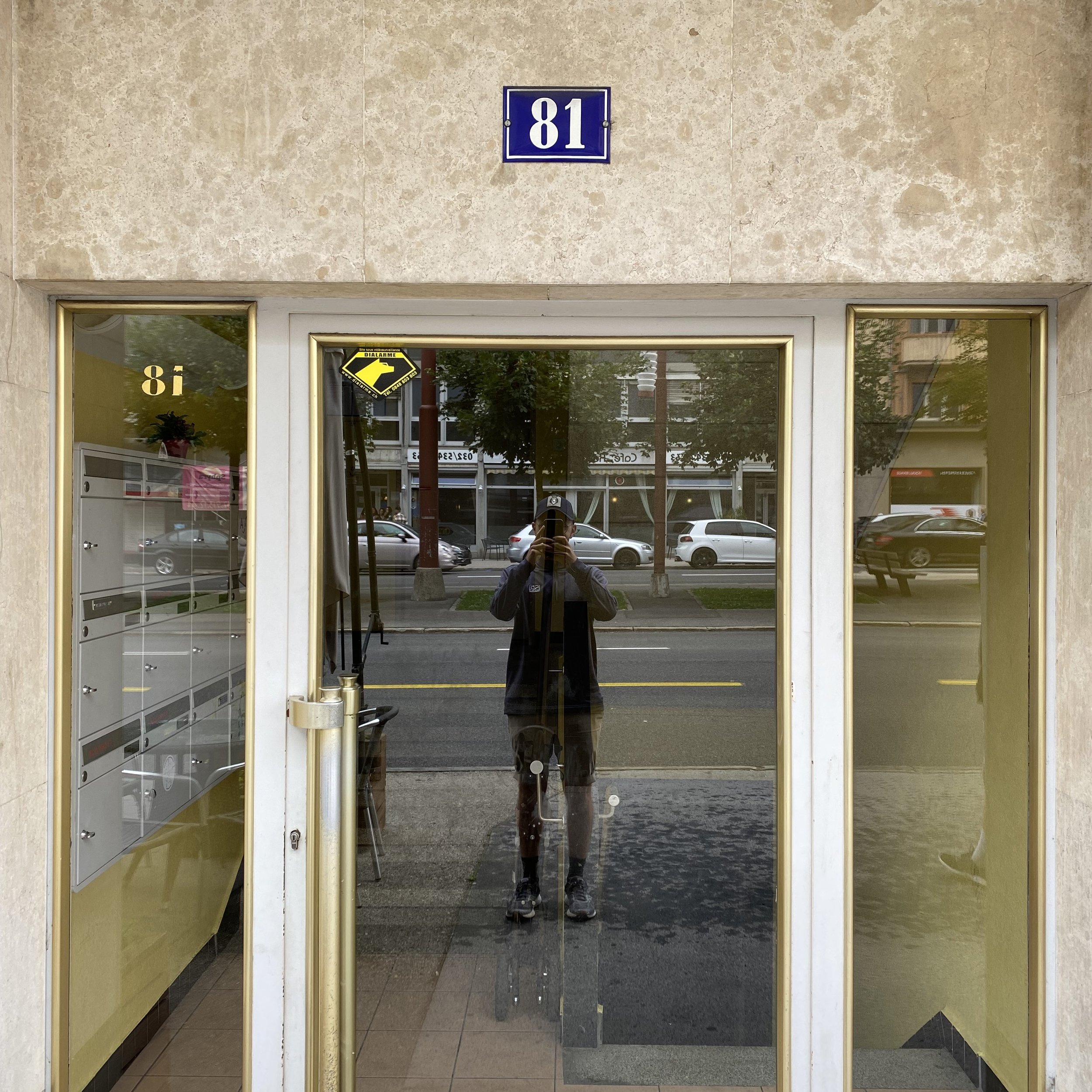
Unwinding Family History:
Benedict Watch Co.
PUBLISHED OCTOBER 2021
I've always worn watches…
I remember my first few, which included a New Jersey Devils digital watch, which I received around first grade, and a Chad Pennington (former American football player for the New York Jets) jersey dialed watch, which ultimately gave me a rash on my left wrist. I think I took a pause on wearing watches at that point, maybe in third grade.
Throughout high school and early college, I was always wearing a Timex Weekender watch; I had the watch in both the white dial and parchment dial variations. I loved switching out the bands; I even had a yellow and blue strap that I would wear when I had a hockey or soccer game that night at school. I remember being told at a Super Bowl party when I was in 10th grade/around 15 years old, "that watch is such a classic you move." I can't remember what the exact comment was, who said it, nor why the watch was dubbed "classic me," but I guess I was already into watches at the time.
Le Sentier, Switzerland, August 2021
Me wearing a Jaeger-LeCoultre Hybris Mechanica Master Grande Tradition Gyrotourbillon 3 Jubilee watch in ultra-white platinum.
…and I've always had a fixation with time…
When I can, I like to keep a fairly structured schedule. As someone who grew up playing a lot of soccer, I learned that time is of the essence, especially when you're down by a goal and it's the 85th minute.
While I do like the structure that schedules provide, I believe that it is what happens between those fixed time slots that makes life interesting - the spontaneity amidst the structure is what adds color and depth to life. We all have time, some scheduled and some not, but what we do with that time is what makes each of our lives unique.
International Museum of Horology, La Chaux-de-Fonds, Switzerland, August 2021
“Man and time”
This idea is similar to watches too. All watches tell the time in the same way, but each one is slightly different; each tells a different story. Some watches tell your story as you continue to wear them, some tell the story of a previous owner through scuff marks and discoloration, and some, like one of mine, unlock otherwise unknown family history.
I really wish I could trace my fixation back to something, but I really can't. I know why I like soccer; I have a sense of why I'm fascinated and invested professionally in sports sponsorship and marketing, but what about watches and horology? I'm not sure at all.
Maybe it is in my blood?
To piece this interest and fixation together, it took a gifted watch, months of research, a spontaneous trip to Switzerland, a meeting with a 94-year-old second cousin-twice removed in Geneva, and a visit to a small Swiss town.
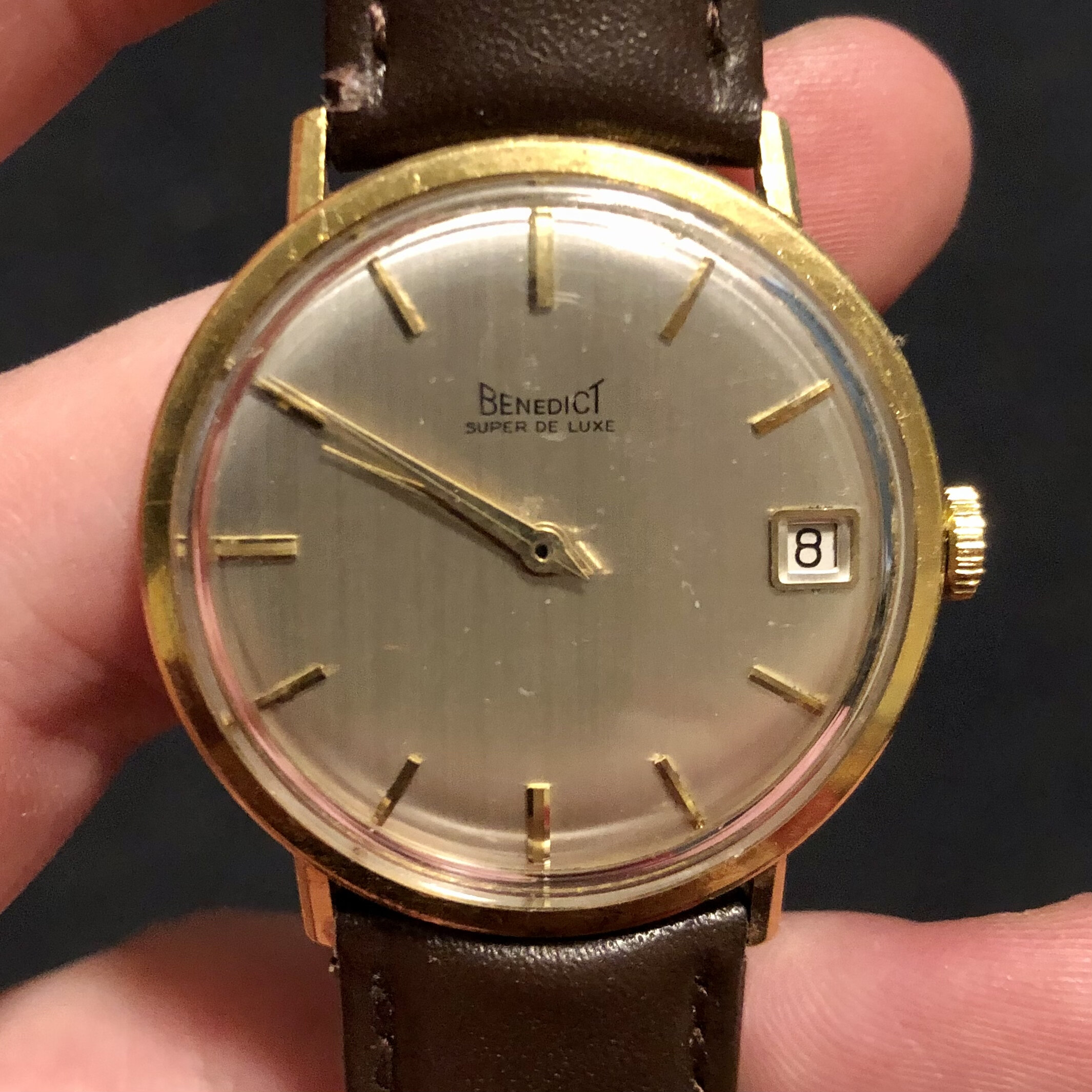
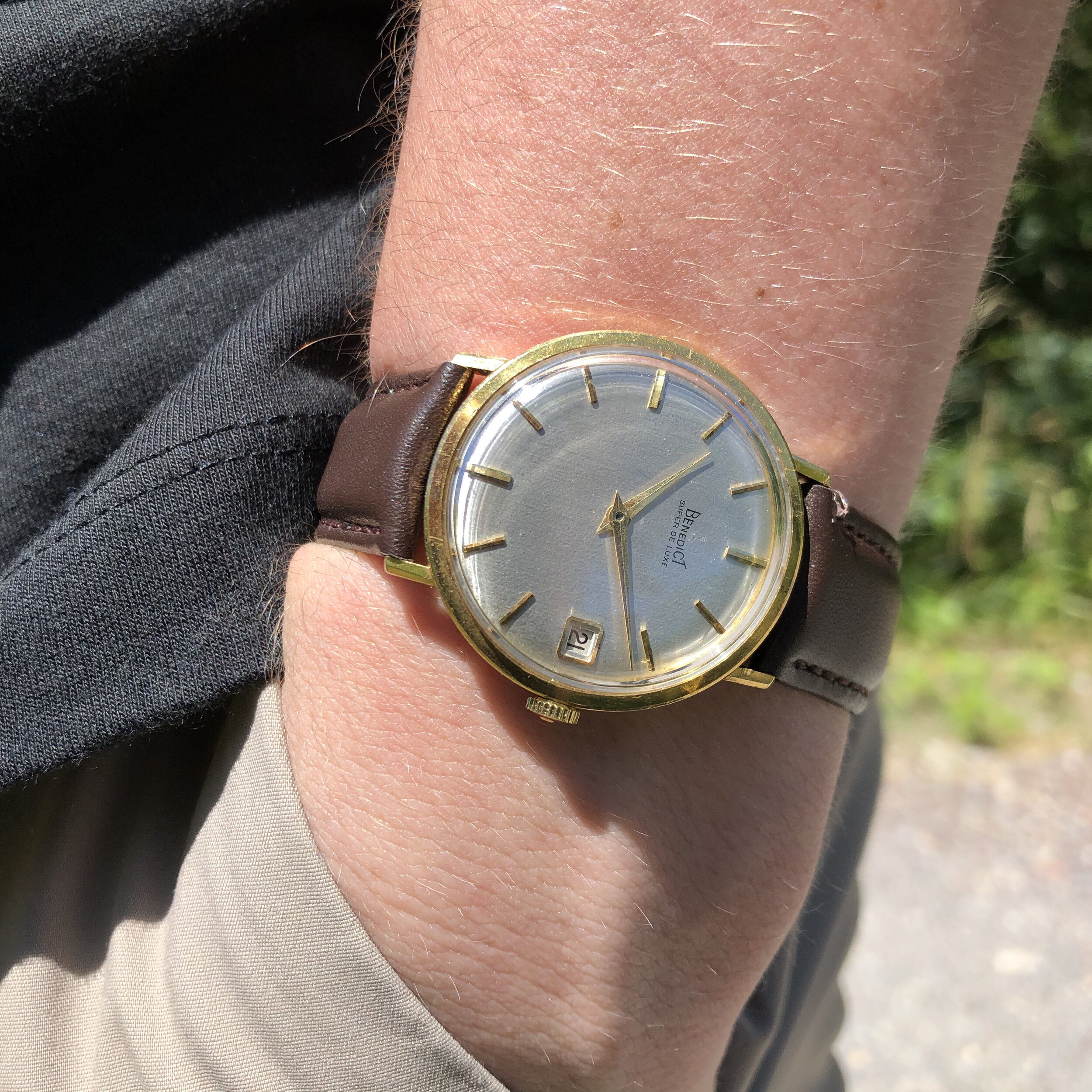
As my interest in watches grew over the past few years, my Dad found and gifted me with a 31mm gold watch, with an ETA movement, that was originally gifted to his grandfather Boris Gorlin. The brand name on the dial of the watch was "Benedict" — as seen in the photos above.
Many Jewish people take on Hebrew names at birth for religious purposes. My Hebrew name is Adam Baruch (ba-rukh) Natanel, which translates into Adam Blessed Gift-of-God. The second name, Baruch, was also the Hebrew name of my great-grandfather, Boris Gorlin, whom I mentioned earlier. He is my Hebrew namesake.
I was told that this gifted Benedict was given to Boris Gorlin because the brand name was also his name... Baruch, blessed, blessing, benediction.... Benedict. I had no idea who had gifted him this watch; it was a mystery to me.
As the pandemic kicked off, I started to take a deep dive into the Benedict brand, scouring the internet for all I could find. I first stumbled on the website Mikrolisk, a horological trademark index. On this page, I found that the watch brand Benedict was incorporated by Leon Zuckermann in La Chaux-de-Fonds, Switzerland, in 1930.
Benedict Advertisement, c. 1960s
An old Benedict advertisement promoting the Benedict Incabloc models.
I texted my Dad right away after finding that name, asking if he knew who this man was, and he replied, "Call Grandma." According to my grandmother Danièle, Leon Zuckermann was her father’s, Boris Gorlin's, first cousin.
Boris Gorlin and Leon Zuckermann shared a grandfather, Baruch Reinin, who was my great-great-great-grandfather. Baruch Reinin was born in Shklow, Belarus in 1844. He had a large family, including one grandson, Boris Gorlin, who was named after him, and another grandson, Leon Zuckermann, who founded a Swiss watch company with his name. I was also named after him.
Likely Moscow, circa 1890s
Baruch Reinin: my great-great-great-grandfather and my namesake’s namesake.
In August 2021, at the end of my stay in Spain, I decided to travel to Switzerland to hike, visit watch museums and factories, and visit La Chaux-de-Fonds, the hometown of my family's watch brand.
La Chaux-de-Fonds is located in the Jura Mountains, a few thousand feet above sea level, in the Swiss canton of Neuchâtel. The town is a UNESCO World Heritage Site because it was designed exclusively to accommodate watchmakers and factories. As the New York Times writes, "The town was built on a grid of wide streets, and its stucco townhouses, terraced up the side of a hill, have garden spaces in front. It was designed for the glory of time."
La Chaux-de-Fonds, Switzerland, August 2021
The main grid of La Chaux-de-Fonds is quite easy to navigate.
I was set to arrive in Geneva on Friday, 20 August 2021. The night before I arrived, I received an email from my second cousin-twice removed, Boris Zuckermann, Leon's son, inviting me to his home in Geneva. I landed in the morning, ran to get a COVID test, and then went over to his home to meet him and his wife, Doris, and one of their sons. We chatted for over three hours.
Boris Z., who is now 94 years old, worked for Benedict from 1952 until the early 1970s, when they sold the company right before the infamous 'Quartz Crisis.' Traditional Swiss watchmakers did not adapt quickly enough to the cheaper and more accurate quartz battery-powered watches coming out of Japan and China during the crisis, and as a result, many independent Swiss watchmakers at the time folded or were sold to conglomerates. Boris Z. was heavily involved in this process of combining and selling off watch and watch-parts factories of that time, ultimately letting many of those individuals in the collapsing industry to stay in their hyper-specific and technical roles.
Benedict Watch Factory, La Chaux-de-Fonds, Switzerland, circa 1950s
Boris Z. can be seen on the left working in the factory’s office.
Boris Z. shared with me his stories, our shared family stories, and the story of his father and the Benedict brand.
Leon Zuckermann was born in Moscow in 1891. In the midst of his 20s, in the 1910s, he found himself on vacation in Belgium. As World War I kicked off, his family told him to go to England to stay safe there with a family friend.
After running out of money in England, his family advised him to travel to Switzerland, specifically to La Chaux-de-Fonds, where his family had other connections.
"They told my father it would only be a matter of months," Boris Z. recalled to me, "but he ended up staying there for the rest of his life." The war lasted more than a few months, and with the subsequent Russian Revolution, Leon stayed put in his new home in Switzerland. He stayed there until he passed away in 1978.
Benedict Watch Factory, La Chaux-de-Fonds, Switzerland, circa 1950s
Leon Zuckermann sitting at his desk in the factory, with a photo of his grandfather, Baruch Reinin, over his shoulder.
Leon's family, the Reinin family, were involved in watch and clock making in Moscow in the early 1900s. Through their work, they had the connections that allowed Leon to settle safely in Switzerland. "They imported parts from Switzerland and assembled them in Moscow," Boris Z. told me. "They were very influential in the industry there."
In his book "From Tsarism to the New Economic Policy: Continuity and Change in the Economy of the USSR," British historian R. W. Davies wrote, "the mass production of timepieces was not strongly developed in Tsarist Russia. Simple wall clocks of the 'grandfather' type were made by a few workshops using primitive equipment and hand labour. At only one works, the Moscow factory of B. Reinin, was there any attempt to organize mechanized production... The development was prompted by government tariff policy, which imposed high customs duties on finished timepieces, but lower duties on unassembled parts."

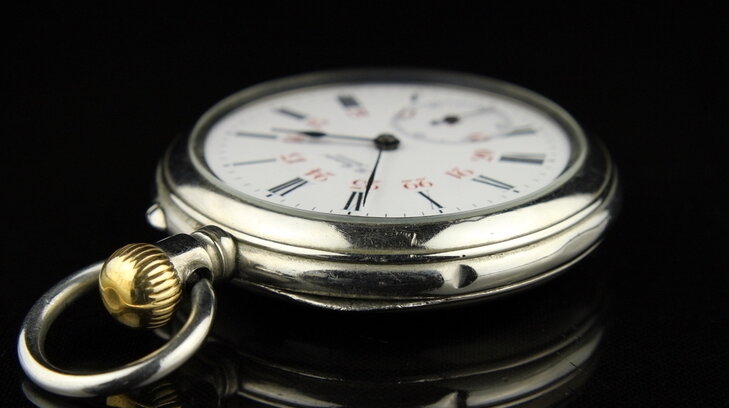
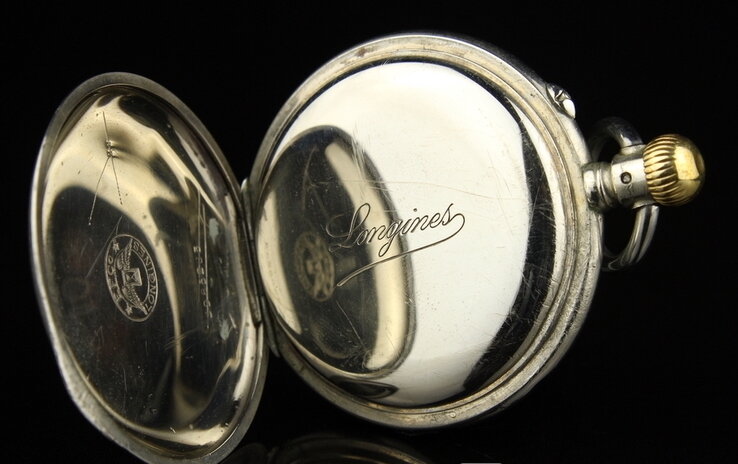
On the blog of a Russian/Soviet watch collector, there is mention of the same story and the ultimate state-takeover of my great-great-great grandfather's business: "The watch industry in Tsarist Russia consisted just of several small workshops and enterprises. They usually assembled watches using watch parts that were made abroad. After the 1917 Bolshevik revolution, the entire watch industry became a part of the “Trust of Precision Mechanics.” These were mainly production facilities, work-shops, and warehouses of watch parts and half-finished products which belonged to famous manufacturers such as P. Bure, G. Mozer, Reinin, Dmitriev, and others before the revolution."
According to one website that shares some information about the industry and displays photos of B. Reinin pocket watches, "the first attempt to replace on a large scale the foot and hand method of production with a mechanical one... was made in Moscow only at the end of 1911 by one of the largest watch companies - Trading House Reinin."
The main business was located in Moscow at 8. Suvorovskaya Street. I can't verify if it is the same building standing there today.
A receipt from B. Reinin Trading House, Moscow, August 1914
“Invoice to the Naro-Fominsk hospital of the All-Russian Union "Help for the wounded." for five large clocks for a price of 90 kopecks…. the money was received in full by B. Reinin.”
Leon settled in La Chaux-de-Fonds, entered the business of his grandfather, and incorporated the Benedict brand in 1930, as mentioned above. According to Mikrolisk, he incorporated other brand names and models through the years -- Namron (1945), Elzed (1946), Park-o-Phon (1959) and Lunar Eagle (1969).
According to Boris Z., they also worked on producing watches for other brands, including Canadian brand Gladstone (a few of their watches are floating around on eBay today, although I can't verify which were produced by Benedict) and Russian/Canadian brand Cardinal.
Benedict Watch Factory, La Chaux-de-Fonds, Switzerland, circa 1950s
Workers in the factory utilizing the natural light pouring through the large windows.
Boris Z. said that the factory was producing between 15,000-20,000 pieces per year. It is amazing to think how many of these watches were out there at a previous point in time and how rare they are to find now online.
The Benedict Park-O-Phon is one model that is still available online today. Boris Z. created this model in order to assist its wearer in avoiding parking tickets. It performs the same function as the Jaeger-LeCoultre Memovox Parking, which buzzes and vibrates on the wearer's wrist and was introduced in 1958, one year prior to the Park-O-Phon.
"Although we released very similar watches at similar times, Jaeger-LeCoultre and I had a verbal agreement that I could keep producing our Park-O-Phon because while the concept of the two watches was the same, the means to achieve the alarm function and the design were slightly different," Boris Z. shared with me. "They could do their thing, and we did ours."
Geneva, Switzerland, August 2021
After another three more hours spent with Boris Z. on the last day of my trip, he graciously gifted me a steel Park-O-Phon, which "we only produced a few hundred of," he added. Boris Z. and the watch are pictured here.
I keep hunting down information and watches online as much as I can. I have found some more online, and I have ultimately purchased some more too. I have continued to learn about the different movements in the watches, the cases used, the designs used, the materials used, and I even realized how the branding had changed over time through owning a few from three different decades.

Benedict 'Dorado' diving watch from the 1960s, previously sold by a vintage watch seller in Cyprus.
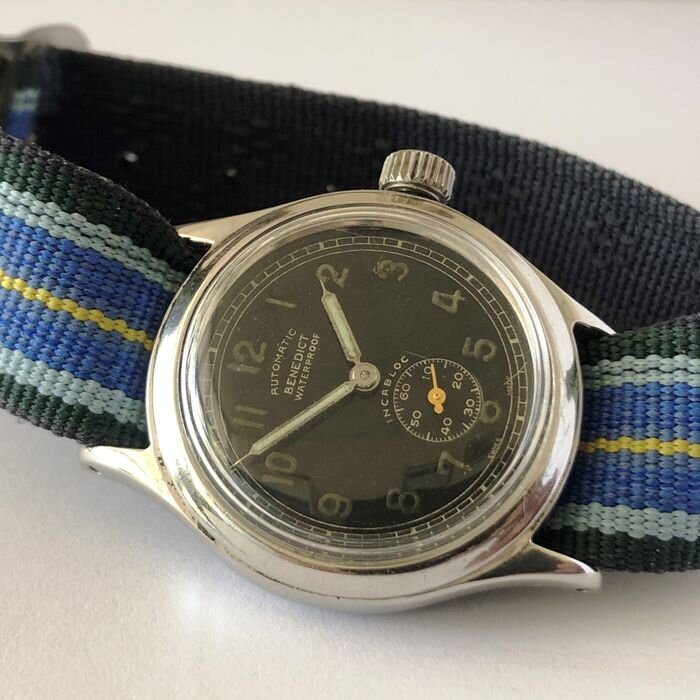
Benedict Incabloc (a system that protects the balance wheel from damage if the watch is dropped) from the 1950s with a bumper movement and a radium-painted dial. I purchased this one through an auction in Turkey.
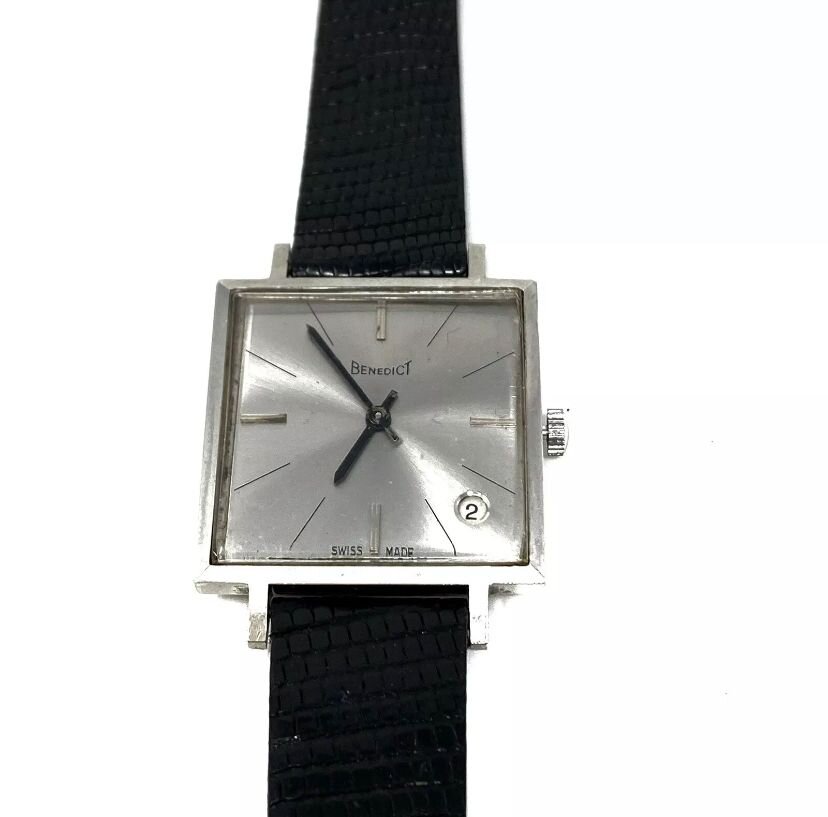
After an older woman in Florida, I am the second owner of this art-deco style 1960s hand-wound dress watch.

The most complicated Benedict I have found is this one with a full-calendar complication. It is likely, based on the logo, from the 1960s. The auction house never sold it. If you come across this watch in the wild, let me know!
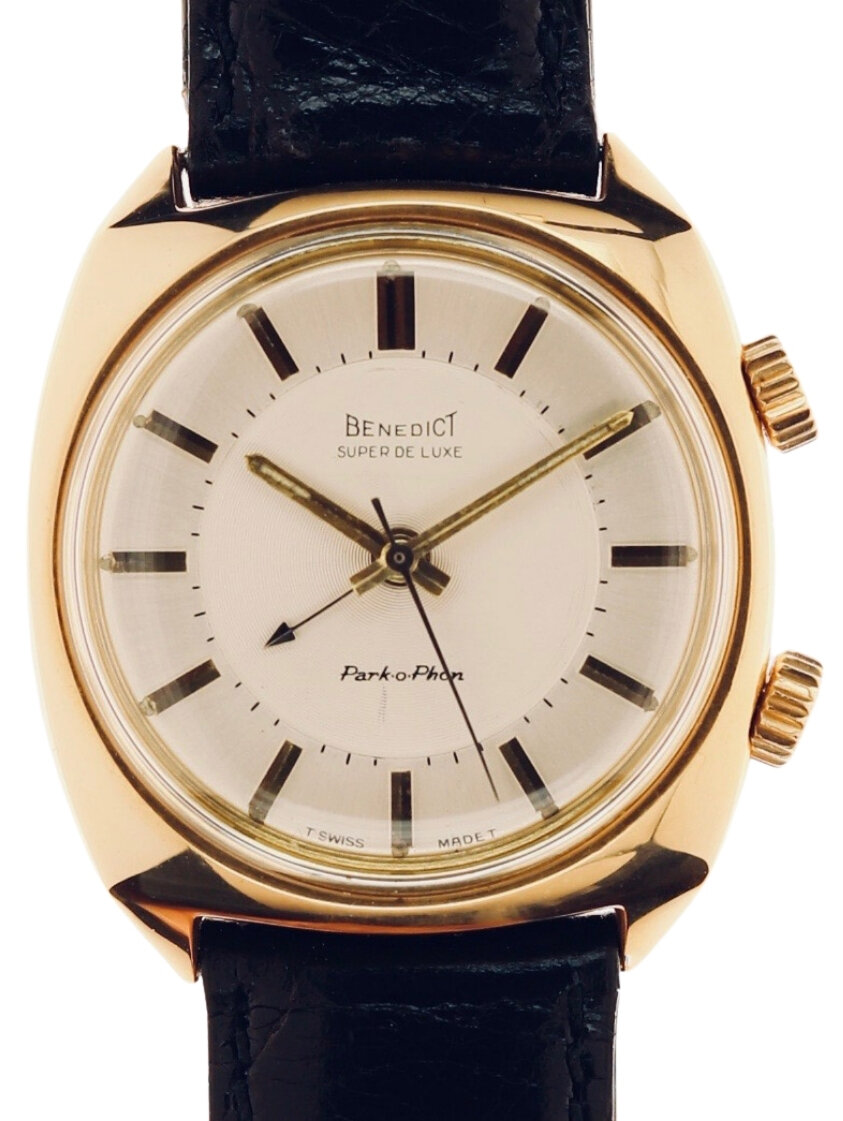
Benedict Park-O-Phon, from the 1960s, seemingly came in this gold plated version as well as my steel circular version.
Boris Z. showed me some photos of the factory, inside and out, and shared with me the address, Av. Léopold-Robert 81. He also showed me where the local synagogue and cemetery are, as there was once a large community of Jewish watchmakers in the town during its peak of importance.
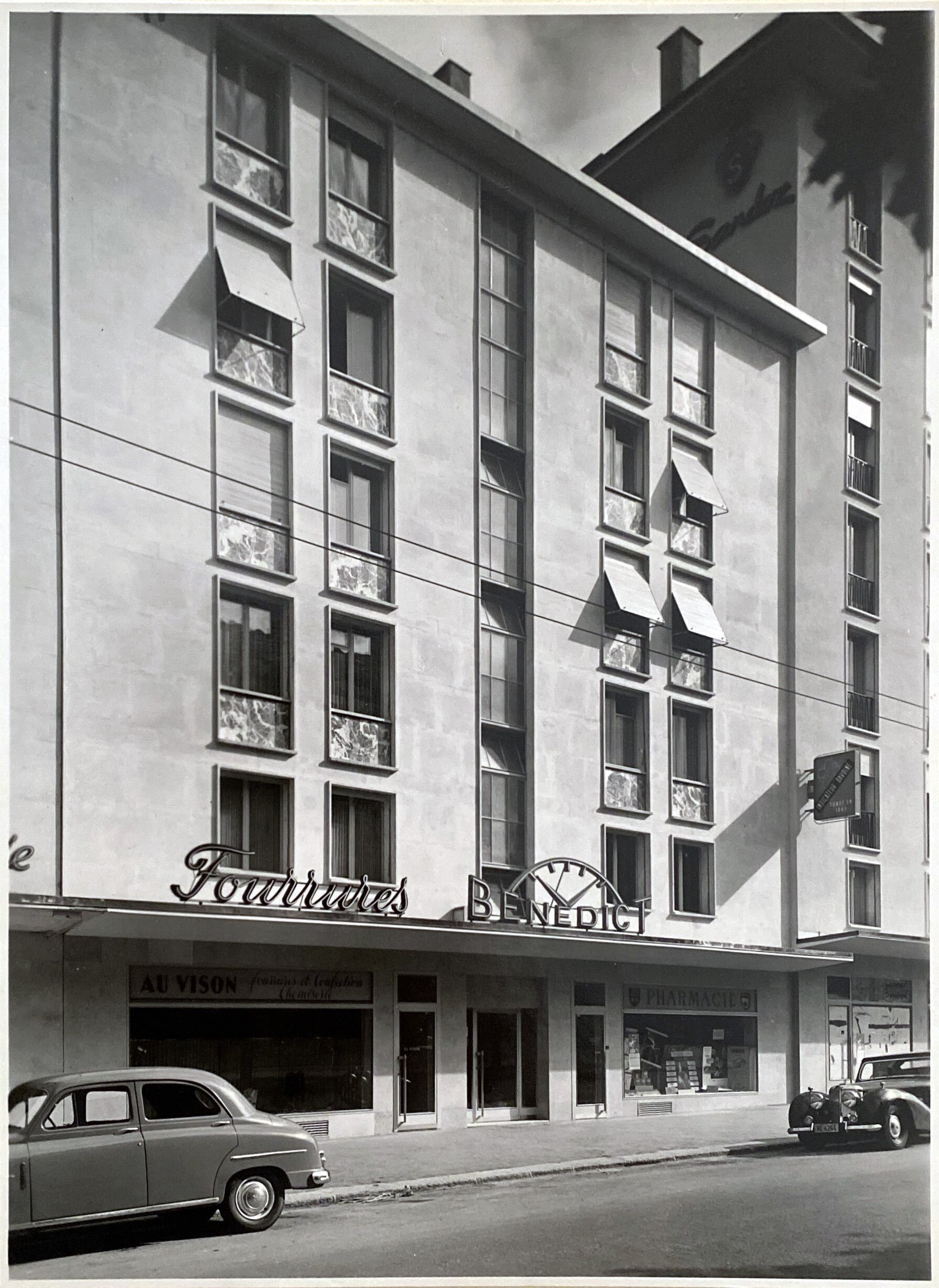
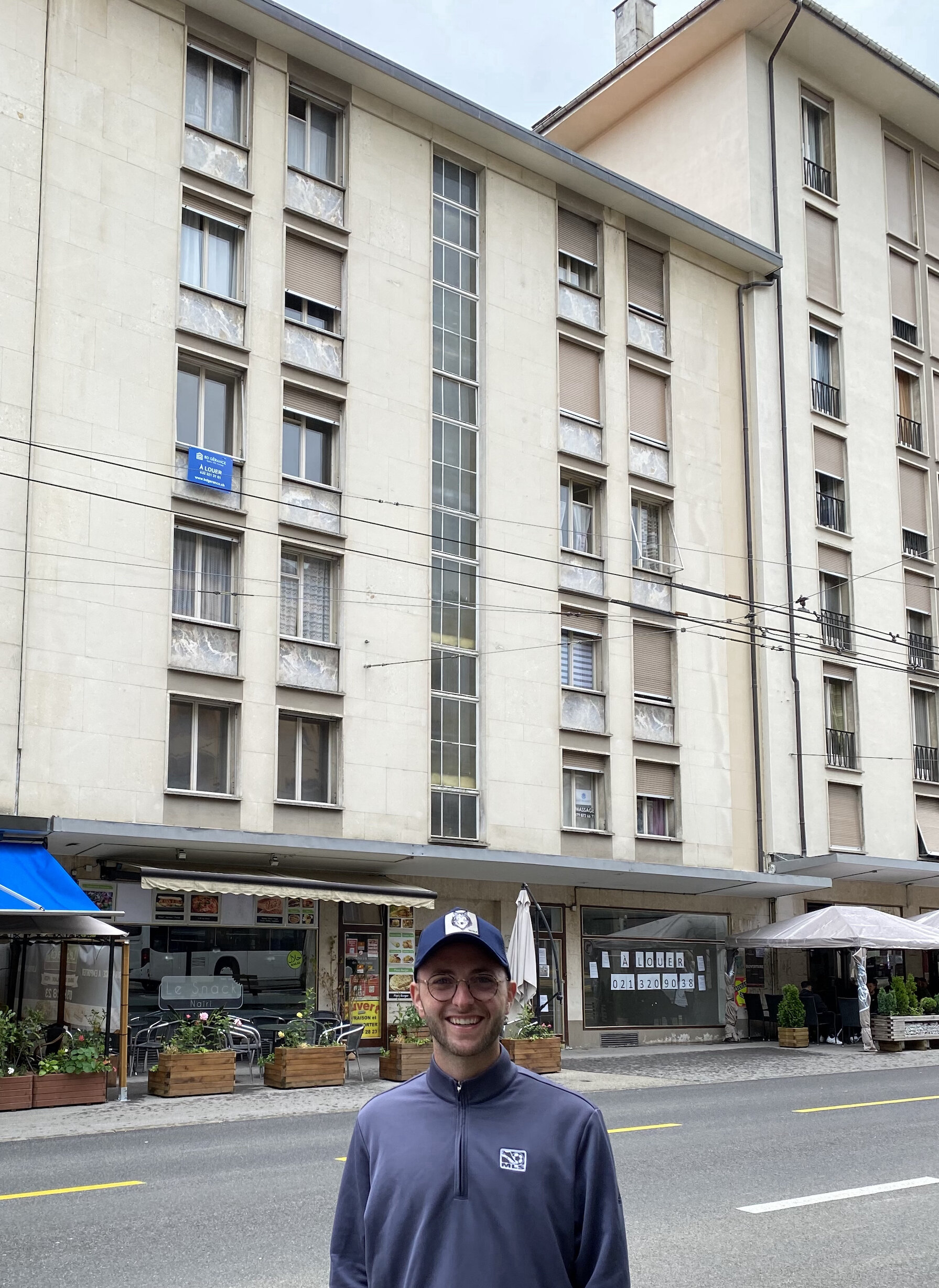
While I had only planned to visit La Chaux-de-Fonds for the International Horology Museum and for the chance to be in the town where Benedict was founded, my day there turned into a day of visiting the actual sites where my family lived, worked, thrived, and where they now eternally rest. In the local cemetery, not only did I find the grave of Leon and his wife Cecile, but also the grave of Baruch Reinin's wife, Ita, who passed almost a century ago, in 1925.
When I was in my teenage years wearing watches, I never would have thought that this wacky interest would have led me to a small yet well-kept Jewish cemetery, next to a massive Patek Philippe factory, in a quiet Swiss town, standing at the grave of the matriarch of my family, reconnecting with my ancestors.
La Chaux-de-Fonds, Switzerland, August 2021
This excursion was magical and truly unforgettable. How much I would want to be there in the factory with Leon and Boris doing marketing for their brand and maybe even some brand sponsorships deals. But alas, I recognize that we're in a different time now….
This history and experience has been the inspiration for me to start my own watch brand, Adam Benedict. The brand is inspired by family history, yet designed for the present. You can learn more about the latest from my brand over on its website, AdamBenedict.com.




